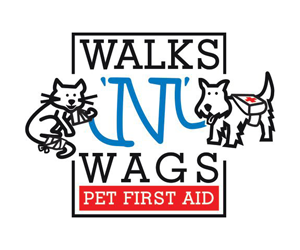Summer is a season filled with outdoor adventures, long walks, and plenty of fun in the sun. And what better way to enjoy it all than with your furry friend by your side? Dogs are the perfect companions for outdoor activities and are always ready for some fun in the sun. However, it’s important to remember that the hot weather can also pose serious risks to your furry friend’s health and safety. That’s why it’s crucial to prioritize summer safety for dogs.
As pet owners, we have a responsibility to ensure our dogs are protected from the hazards that come with summer, including heatstroke, sunburn, and water-related accidents. By taking the necessary steps to keep our furry friends safe, we can all enjoy a summer filled with happy memories and outdoor adventures.
Summer Safety for Dogs: Tips for Keeping Your Dog Cool
As temperatures rise, so do the risks of overheating in dogs. It’s important to remember that dogs are more susceptible to heatstroke than humans, as they can’t regulate their body temperature as efficiently. Heatstroke can lead to serious health complications, including organ failure and even death.
To keep your furry friend cool during the summer months, make sure they have access to shade and plenty of water. Consider setting up a kiddie pool or misting station to provide some relief from the heat. Avoid exercise during the hottest parts of the day and opt for early morning or evening walks instead.
It’s important to recognize the signs of heatstroke, including excessive panting, lethargy, vomiting, and collapse. If you suspect your dog is suffering from heatstroke, seek immediate veterinary care. Quick action can mean the difference between life and death.
Sun Safety: Protecting Your Dog’s Skin and Eyes
Just like humans, dogs can suffer from sunburn and damage to their skin and eyes from prolonged exposure to the sun. It’s important to protect your furry friend from harmful UV rays to avoid painful sunburns, skin cancer, and eye damage.
One way to protect your dog’s skin is by using pet-safe sunscreen, especially on areas that are thinly haired or pink-skinned. Make sure to choose a sunscreen that is specifically formulated for dogs, as human sunscreen can contain ingredients that are toxic to dogs. You can also provide shade, such as an umbrella or a covered area, for your dog to retreat to during peak sun hours.
In addition to protecting your dog’s skin, it’s also important to protect their eyes. Dog-specific sunglasses are available in the market that offer UV protection and can be a great investment for dogs who spend a lot of time outdoors. If sunglasses are not an option, make sure to avoid direct sunlight during peak hours and keep your dog in shaded areas as much as possible.
Water Safety: Keeping Your Dog Safe Around Pools, Lakes, and Beaches
While swimming can be a fun activity for dogs, it’s important to be aware of the potential dangers that water can pose. Drowning, exposure to harmful bacteria, and other water-related injuries are common risks for dogs during the summer months.
To keep your furry friend safe around water, always supervise them when they are swimming, and consider using a life jacket, especially for dogs who are not strong swimmers. Additionally, make sure to introduce your dog to water gradually and in a safe and controlled environment.
It’s also important to be aware of the risks of harmful bacteria in lakes, ponds, and oceans. Make sure to rinse your dog off after swimming to remove any harmful bacteria and reduce the risk of infection. Finally, if your dog is exposed to any open wounds or scratches, it’s best to keep them out of the water to avoid further infection.
Summer Hazards: Avoiding Common Dangers
Summer is a time for outdoor adventures and exploration with your furry friend, but it’s important to be aware of common hazards that can be dangerous to dogs. Some common hazards in the summer months include toxic plants, insects, and parasites.
Toxic plants, such as poison ivy, oak, and sumac, can cause skin irritation or even internal health issues for dogs. To avoid these hazards, keep your dog on a leash when hiking or walking in wooded areas and familiarize yourself with the types of toxic plants that are common in your region.
Insects and parasites, such as ticks, fleas, and mosquitoes, can also pose a threat to your dog’s health. Make sure to check your dog regularly for ticks after outdoor activities, and use flea and tick preventatives as recommended by your veterinarian.
During the summer, we need to be mindful of pesky black flies and mosquitoes that can potentially infect our pets with heartworm. Prevention is key and talking to your vet about options such as seasonal chewable tablets like Heartgard can provide peace of mind. Additionally, wasp stings can cause harm to our furry friends, so it’s important to have Benadryl on hand and know the proper dosage. If your pet shows signs of slowing down, throwing up, or has pale gums after being stung, it’s essential to seek veterinary care immediately as shock can be deadly. Allergic reactions must be dealt with quickly, just like with humans.
——————-
At The Dog Stop we are dedicated to ensuring that you and your dog have a long and healthy life together. We offer an air conditioned Dog Daycare with separate rooms for both large and small dogs and Dog Training for every age and stage for your dog.






